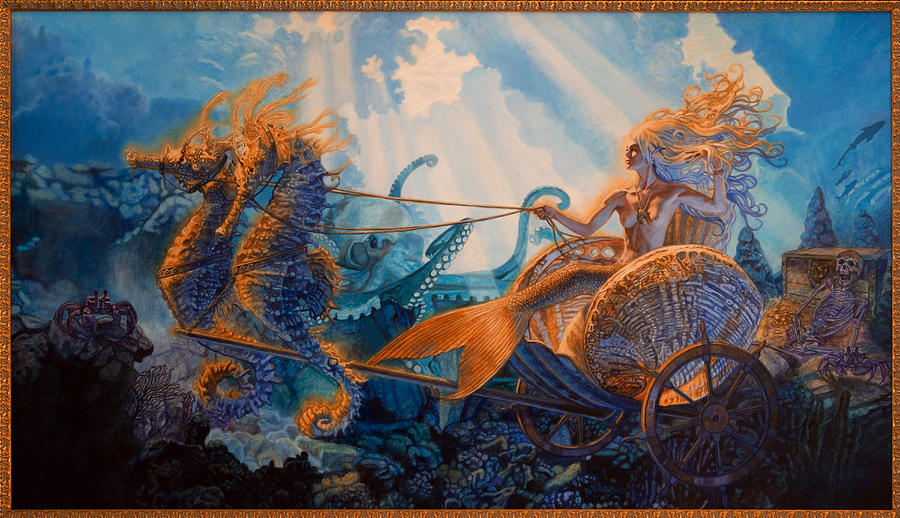
21 Sep “Art Along the Coast” Highlights Local Artists But Lacks Diversity of Art and People
Last month, over thirty artists from the 2020 Festival of Arts of Laguna Beach opened their private art studios and gallery venues for visitors to take a no-cost, self-guided journey through the Orange County coast in an event called “Art Along the Coast.” For two consecutive weekends, artists from San Clemente to Santa Ana shared their new art as well as works in progress to locals looking to support and connect with the art scene in their community. This was a great opportunity for both artists and the public to experience, safely and in-person, the artists of the prestigious Festival of Arts this year—which was presented in virtual format and not open to the public for the first time since World War II, due to the COVID-19 pandemic.

As for the artists participating, there was a great variety of media that included jewelry, ceramics, glass art, photography, printmaking, drawings and paintings. There was also a fair number of female artists compared to their male counterparts, something that is refreshing in today’s art world. Nonetheless, this is where the diversity ends. Cars, architecture, local urban landscapes, and the omnipresent ocean dominated the imagery seen throughout the studios represented, with slight differences depending in the artist’s personal style and approach. While this romanticizing of the landscape surrounding them is a popular (and commercial) point of view for an artist, it is worth noting that Southern California is not just about the ocean, automobiles, and 20thcentury architecture. For most people, Southern California is a synonym for diversity, and this was exactly what “Art along the Coast” lacked.

A common view during this tour, besides the ones mentioned above, was the borrowing of symbology and religious imagery from other cultures, most specifically Asian. With Orange County being home to the third largest Asian American population in the United States, it wouldn’t be surprising to see elements from these cultures (such as those from Buddhism) pop up in an art event dedicated to showcase the local art scene. However, it gets problematic when this appropriation is used a substitute for diversity: The number of artists of Asian heritage presented in the show is minimal compared to those of European origin, but their religious symbolism is seen in many of the artworks seen during the tour.
“Art Along the Coast” did have some artists that stood out, however, for their uniqueness in their work and their ability to present a creative view that proved refreshing among the dominant repetition of the rest of the work in this event:
Antje Campbell’s minimalistic female busts and figure sculptures in clay and bronze. With only a few carvings, Antje is able to communicate human emotion and womanhood to a personal level. Intimate family scenes, childhood memories, and a sense of feminine connection are commonly seen in her work.

Lake Forest’s Ray Brown stands out for his majestic charcoal portraits of animals both wild and domestic. Ray’s mostly black and white renderings portray fauna in a nostalgic, ethereal way, reminiscent of photographs from times past. His work makes the viewer take a step back and contemplate the simple beauties that surrounds us, and the creatures—large and small—that we share this world with.

Originally from India, Vinita Voogd is one of the two printmaking and mixed media artists in the show. Vinita creates a visual feast of color, pattern, and texture from a diverse selection of materials, gathering inspiration from all over the world and blending these multicultural elements to images that speak to the perception of universal identity.

Paul Bond’s dream-like, fantastic, yet realistic paintings merge references to Surrealism with Magic Realism in a world of his own. Looking at Paul’s artwork, viewers are invited to take a glimpse into his imagination and travel inside a realm where animals wear disguises, giant rocks float in the sky, and nothing is impossible.

Southern California native Casey Parlette creates sculpture of wildlife in wood, metal and stone. Casey uses the unique patterns and textures found in those to bring out the special qualities of his subjects, whether plant or animal. By mixing carved wood and stone with forged metal, Casey demonstrates that nature is interconnected, and beauty can be brought out from a myriad of shapes and combination of materials.

Patrick Whelan’s fine art and illustration work is whimsical, narrative, and full of small details made to engage the viewer for long periods of time. His work is reminiscent of early American illustration and presents an imaginative reality that connect fantasy with the physical world.




Sorry, the comment form is closed at this time.